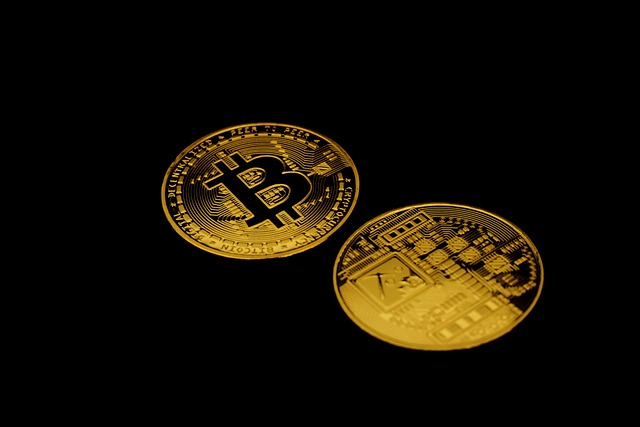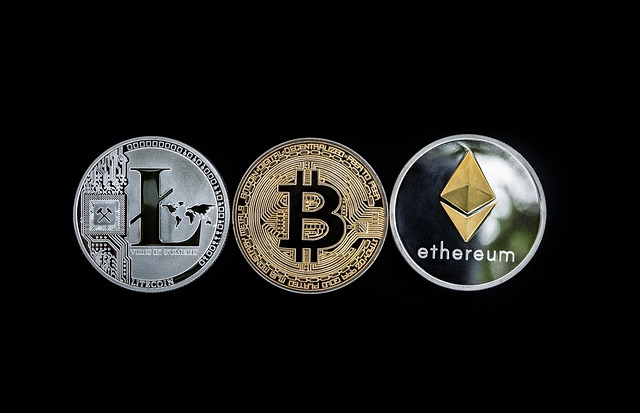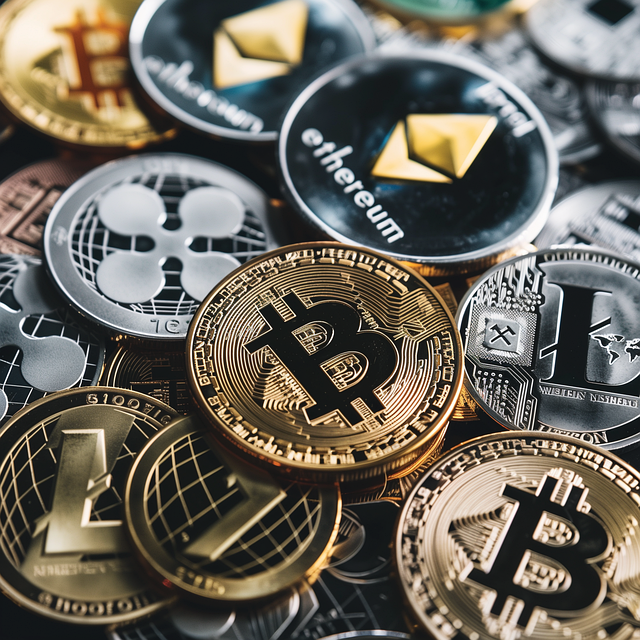What Are Altcoins in Cryptocurrency: A Complete Guide
Author: Jameson Richman Expert
Published On: 2025-10-23
Prepared by Jameson Richman and our team of experts with over a decade of experience in cryptocurrency and digital asset analysis. Learn more about us.
What are altcoins in cryptocurrency and why do they matter for investors, developers, and the wider digital economy? This article explains what altcoins are, how they differ from Bitcoin, the main types and use cases, how to evaluate and trade them, and practical strategies for navigating altcoin cycles. You’ll also find actionable tools, top resources, and links to further reading so you can research and trade responsibly.

Quick definition: What is an altcoin?
Altcoins — short for “alternative coins” — are any cryptocurrencies launched after Bitcoin. They include tokens and coins that aim to improve on Bitcoin’s perceived limitations, introduce new features, or serve niche use cases (DeFi, smart contracts, NFTs, privacy, governance, payments, etc.). While Bitcoin is often described as “digital gold,” altcoins attempt to expand the utility of blockchain technology.
Why altcoins exist: Purpose and innovation
Altcoins exist for several key reasons:
- Innovation: Many altcoins implement new consensus mechanisms (e.g., proof-of-stake), scalability solutions, or smart contract platforms that Bitcoin doesn’t provide.
- Specialization: Some coins target specific verticals, such as privacy (Monero), low-cost payments (Litecoin), or decentralized finance (Uniswap, Aave).
- Experimentation: Developers use altcoins to test economic models, tokenomics, and governance structures that could later influence broader crypto design.
- Community & funding: Tokens provide ways to bootstrap communities, reward participants, and fund development without centralized control.
Types of altcoins
Altcoins vary widely. Knowing the main categories helps with research and risk management.
1. Coins vs. tokens
- Coins run on their own blockchain (e.g., Litecoin, Dogecoin). They are native to their networks and typically have independent consensus rules.
- Tokens are built on existing blockchains (most commonly Ethereum). Tokens may follow standards like ERC-20 or ERC-721 and often represent utilities, governance rights, or assets.
2. Smart contract platforms
These altcoins host decentralized applications (dApps). Examples include Ethereum, Solana, and Cardano. They enable DeFi, NFT marketplaces, and complex token logic.
3. DeFi tokens
Decentralized finance tokens power lending protocols, automated market makers (AMMs), yield aggregators, and more. Examples: Uniswap (UNI), Aave (AAVE).
4. Stablecoins
Stablecoins peg value to a fiat currency or asset (e.g., USDT, USDC). They are designed to reduce volatility and are crucial in crypto trading and DeFi.
5. Privacy coins
Privacy-focused altcoins like Monero (XMR) and Zcash (ZEC) focus on transaction anonymity and obfuscation.
6. Utility and governance tokens
Utility tokens provide access to a service; governance tokens let holders vote on protocol upgrades or treasury decisions.

How altcoins work technically
Altcoins rely on blockchain principles—distributed ledgers, consensus mechanisms, cryptographic security—but each design choice affects performance, decentralization, and security.
- Consensus algorithms: Proof-of-work (PoW) vs. proof-of-stake (PoS) vs. delegated PoS and hybrids. PoS reduces energy consumption but introduces different centralization risks.
- Block size & throughput: Some chains prioritize fast transactions and higher throughput (e.g., Solana), while others prioritize security and decentralization (e.g., Bitcoin).
- Smart contract languages: Solidity (Ethereum), Rust (Solana), Haskell (Cardano). Language impacts developer adoption.
Altcoins vs. Bitcoin: Key differences
- Primary use case: Bitcoin focuses on store of value and censorship resistance; many altcoins pursue utility and programmability.
- Technology: Altcoins often experiment with consensus and scaling innovations before adoption or failure.
- Supply and tokenomics: Altcoins have varied supply models — fixed supply, inflationary, or token burn mechanisms.
- Volatility and correlation: Altcoins tend to be more volatile and often correlate with Bitcoin’s market moves, but they can decouple in altcoin seasons.
What is “altcoin season” and why it matters
“Altcoin season” refers to market periods when altcoins outperform Bitcoin by a wide margin. During these times, traders rotate profits out of Bitcoin into smaller-cap altcoins, leading to outsized gains for many tokens.
Understanding upcoming trends and market structure is crucial. For an analysis of market behavior after altcoin cycles, see this in-depth roadmap on what happens after altcoin season.

How to analyze altcoins: Fundamental and technical approaches
Evaluating altcoins requires a mix of fundamental analysis (FA) and technical analysis (TA).
Fundamental analysis checklist
- Use case & problem solved: Does the project address a real need? Is the solution unique or superior to competitors?
- Team & community: Check developer activity and community engagement on GitHub, Discord, and Twitter.
- Tokenomics: Supply cap, inflation schedule, staking rewards, token distribution, and vesting periods.
- Adoption metrics: Active users, TVL (total value locked) in DeFi projects, transaction counts, and partnerships.
- Security and audits: Has the code been audited? Have there been hacks or exploits?
Technical analysis & market indicators
Price charts and indicators help time entries and exits. One essential metric is trading volume, which signals market conviction. Learn more in this comprehensive guide on the trading volume indicator.
- Volume: Rising price with increasing volume suggests strength.
- Market cap and liquidity: Smaller market cap coins are more easily manipulated and harder to exit.
- On-chain metrics: Active addresses, transaction fees, and exchange inflows/outflows give context to demand.
Common risks with altcoins
Altcoins carry significant risks beyond typical market volatility. Recognizing them reduces downside exposure:
- Liquidity risk: Low trading volume can make it difficult to sell large positions without slippage.
- Smart contract risk: Bugs and exploits in DeFi protocols can lead to total loss.
- Regulatory risk: Tokens may be classified as securities or face bans in certain jurisdictions.
- Market manipulation: Pump-and-dump schemes are more common in low-cap altcoins.
- Concentration risk: Large token allocations to founders or early investors that unlock over time can crash prices.
Practical strategies for trading and investing altcoins
1. Research before you buy
Use fundamental checklists, read whitepapers, and watch developer activity. Reliable sources include project websites, GitHub, and reputable news outlets. For educational background on altcoins and broader crypto concepts, consult the Altcoin page on Wikipedia and Investopedia.
2. Position sizing & risk management
Never allocate more than you’re willing to lose. Consider smaller position sizes for high-volatility altcoins and define stop-loss levels. Diversify across different sectors (Layer 1s, DeFi, stablecoins, privacy coins) to spread risk.
3. Use dollar-cost averaging (DCA)
Spread purchases over time to reduce entry risk and avoid buying large amounts at local peaks.
4. Technical entries and exits
Combine price action with on-chain and volume confirmation. Use the trading volume indicator (linked earlier) to verify breakouts and trend strength.
5. Consider automated tools and bots
For active traders, trading bots can execute strategies 24/7, backtest ideas, and manage risk. If you’re new to automation, read this beginner-friendly review of the best crypto trading bot for beginners to find reputable options and setup tips.

How traders short altcoins and hedge positions
Shorting altcoins can be complex due to liquidity and borrowing constraints, but common approaches include:
- Margin trading and perpetual futures: Offered by major exchanges to short cryptocurrencies using leverage.
- Inverse ETFs or swap products: Limited availability; mostly focused on Bitcoin/ETH, not small caps.
- Pairs trading: Long a stable or blue-chip crypto and short a weak altcoin to hedge market risk.
If you’re in Canada and considering short strategies, this in-depth Reddit guide on how to short crypto in Canada provides jurisdiction-specific considerations and platforms commonly used by Canadian traders.
Where to trade altcoins: centralized and decentralized options
Selection of platform matters. Consider fees, liquidity, available pairs, security, and regulatory compliance.
Centralized exchanges (CEX)
CEXs list many altcoins, provide margin/perpetuals, and offer high liquidity. Popular choices include Binance, MEXC, Bitget, and Bybit. If you’re ready to open accounts, you can register using these referral links:
Always complete identity verification where required and store funds securely. Read each exchange’s fee schedule and withdrawal limits before depositing significant capital.
Decentralized exchanges (DEX)
DEXs (e.g., Uniswap, SushiSwap) let you trade tokens directly from wallets (non-custodial). They list many new tokens quickly but have higher counterparty and smart contract risk.
How to spot promising altcoin projects
Look for projects that demonstrate real usage and growth signals:
- Increasing active addresses and transactions indicate adoption.
- Rising TVL (for DeFi projects) shows capital trust in the protocol.
- Strong developer activity on GitHub suggests ongoing improvements.
- Partnerships and integrations with other reputable projects or institutions increase credibility.
- Transparent tokenomics and vesting schedules reduce the risk of sudden sell pressure.

Real-world altcoin examples and what they do
To make the concept concrete, here are brief profiles of representative altcoins:
Ethereum (ETH)
More than a digital currency, Ethereum is the leading smart contract platform powering DeFi, NFTs, and many tokens. Its transition to proof-of-stake (The Merge) aimed to reduce energy consumption and support scaling solutions.
Litecoin (LTC)
Created as a faster, lighter version of Bitcoin for everyday payments. LTC often follows Bitcoin price trends but with lower fees and faster confirmation times.
Chainlink (LINK)
A decentralized oracle network that feeds real-world data (price feeds, API data) into smart contracts — critical for DeFi reliability.
Uniswap (UNI)
A governance token for the Uniswap DEX, which enables permissionless token swaps using automated market makers.
Regulatory and legal considerations
Regulation is evolving. Some tokens have been classified as securities (subject to securities laws), while stablecoins face increased scrutiny for reserve backing. For regional legal assessments, such as whether a major exchange is allowed in a country, consult specialized analysis — for example, this detailed piece on Binance account legality in Pakistan.
Always check local laws and tax requirements. Many countries require reporting crypto income and capital gains; governments publish guidance (for example, the US SEC and IRS pages). Official sources such as the U.S. Securities and Exchange Commission (SEC) provide regulatory context and investor alerts.
Security best practices for altcoin holders
- Use hardware wallets (e.g., Ledger, Trezor) for long-term holdings of high-value assets.
- Enable two-factor authentication (2FA) on exchange accounts and email.
- Beware of phishing: Verify URLs and never share private keys or seed phrases.
- Use reputable bridges: Cross-chain transfers can be vulnerable; prefer audited bridge solutions when available.
- Small test transactions: When interacting with new contracts or bridges, test with small amounts first.

Common altcoin investment mistakes to avoid
- FOMO buying: Entering late during hype without research.
- Ignoring token unlock schedules: Large future unlocks can depress price.
- Overleveraging: High leverage magnifies losses in volatile altcoins.
- Trusting unaudited contracts: Many new projects lack audits and are riskier.
- Lack of exit plan: Define profit targets and stop-losses beforehand.
Advanced strategies: Leveraged trading, yield farming, and staking
Experienced participants use advanced strategies to amplify returns or generate yield:
- Leverage trading: Use margin or perpetual futures to magnify moves. Extremely risky for volatile altcoins.
- Staking: Lock tokens to secure networks and earn rewards. Check slashing risks (penalties for validator misbehavior) on PoS chains.
- Yield farming: Provide liquidity or deposit tokens into protocols to earn yields. Monitor impermanent loss and smart contract risk.
Tools and resources for ongoing research
Reliable data and monitoring tools speed decision-making:
- Market data: CoinMarketCap and CoinGecko for market cap, liquidity, and listing info.
- On-chain analytics: Glassnode, Dune Analytics for chain metrics and dashboards.
- Developer activity: GitHub repos and contributors.
- News and research: Reputable crypto publications and whitepapers.

Case studies: Successful altcoin growth and failures
Studying real cases helps identify repeatable signals:
Example: Ethereum’s network effect
Ethereum’s early lead in smart contracts attracted developers and liquidity, building a powerful flywheel of adoption. The breadth of dApps and DeFi protocols on Ethereum contributed to sustained value capture for ETH.
Example: Rug pulls and token collapses
Conversely, some projects launch with aggressive marketing and anonymous teams, only to withdraw liquidity or exploit contracts, resulting in “rug pulls.” These failures emphasize the need for audit verification and community checks.
How to stay updated and continue learning
Crypto evolves quickly. Follow developer channels, protocol governance discussions, and educational resources. Participate in testnets, read whitepapers, and track on-chain metrics to gain deeper insights.
Further reading and curated links
Deep-dive articles from trusted crypto content creators:
- What happens after altcoin season — market roadmap
- Best crypto trading bot for beginners
- How to short crypto in Canada — Reddit guide
- Trading volume indicator — momentum analysis
- Is Binance account legal in Pakistan — analysis

High-authority references
For foundational definitions and regulatory context, consult:
- Altcoin — Wikipedia
- Altcoin overview — Investopedia
- U.S. SEC — Crypto and investor protection guidance
Final checklist: Before you buy any altcoin
- Read the whitepaper and roadmap.
- Verify team credentials and audit reports.
- Check tokenomics and unlock schedule.
- Analyze liquidity, market cap, and volume.
- Set position size, targets, and stop-loss rules.
- Use secure wallets and enable 2FA on exchanges.
Conclusion
Altcoins are a diverse and innovative segment of the cryptocurrency ecosystem. They offer exposure to new technologies, financial products, and use cases beyond Bitcoin’s original vision. However, they also come with elevated risks: technical vulnerabilities, regulatory scrutiny, and market manipulation. By combining fundamental research, technical indicators (including trading volume analysis), sound risk management, and trusted trading platforms, investors and traders can engage with altcoins more safely and strategically.
If you’re preparing to trade or invest, start with small allocations, educate yourself continuously, and use reputable platforms. For hands-on exposure, consider opening accounts on established exchanges (links provided above) and deepen your toolkit with reputable analytics and automated trading tools.
Good luck, and trade responsibly.